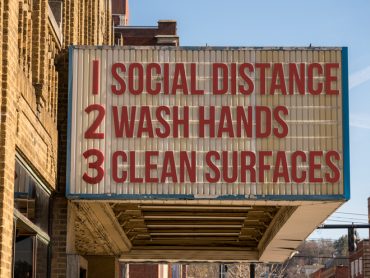Distinguish Brands to Improve Guest Perception
An integral goal of branding is to establish a precedent with consumers so they know what to expect from your organization prior to a purchase decision. It can be dangerous to meddle with expectations because if you fail to deliver on those assumed promises, you risk alienating guests or turning them off permanently.
Branding directly influences average daily rate. For instance, if you are perceived as an ultra-luxury provider, then you can command an ultra-luxury rate, but you better also deliver an ultra-luxury experience. Contrarily, if you are seen as an economy hotel, no consumer will give you the time of day if you are charging 4-star rates.
The objective of proper branding is to educate customers on what your property or hotel chain will offer as the baseline of their experiences. From then on, it’s your duty to meet—then surpass—that threshold and never fall behind. This is something that can only truly be achieved on a guest-to-guest basis and only with services rendered. Realistically, customers must “see the value” in your tag price if they are to even consider staying with you.
Many hospitality organizations and hoteliers believe they are in good standing in the branding department, but a recent two-part study by Laurence Bernstein and his team at Protean Strategieshas revealed many cracks in the company armor. Hotel brands are simply not doing enough to convey which price-based segments their organizations belong to, and in turn what guests should expect as the baseline experience for that ADR bracket. Ultimately, these maligned brand perceptions will negatively impact revenue per available room and guest satisfaction.
The Protean study
To assess awareness versus reality, 398 travelers from the United States were asked to classify 13 prominent hotel brands as members of price-based segments (upper midscale, upscale, upper upscale and luxury) and by their star ratings (economy, 3-star, 4-star, 5-star and ultra-luxury). Answers (empirical positioning) were then compared with the listed classifications (brand positioning) to generate percentages showing how many people correctly valued and erroneously overvalued or undervalued each brand.
If the research showed a certain hotel’s brand positioning was in sync with the empirical positioning, then senior management could rest easy. However, this was the exception rather than the rule. The data speaks to a much darker reality, one where most brands in the luxury and upper-upscale segments were underrated by participants.
Additionally, few of those surveyed overrated hotels at the 4-star and 5-star levels. It was only at the extremes of luxury and economy that participants identified the correct brand classification (more than 50%), for instance, for the Ritz-Carlton (ultra-luxury).
Further analysis of the results showed there was significant segment confusion when appropriating brands as either 4-star (upscale) or 5-star (upper upscale) and that most participants were much more likely to allocate brands to the lower of the two.
For example, Sheraton Hotels & Resorts and Westin Hotels & Resorts are categorized as upper-upscale brands, while Four Points by Sheraton is upscale. Yet, all three were mostly identified within the 4-star segment. W Hotels, a luxury brand and the fourth member of the Starwood Hotels & Resorts Worldwide family included in the survey, elicited a roughly equal response for the 4-star, 5-star and ultra-luxury segments.
A similar trend was seen with Marriott International’s JW Marriott (luxury), Marriott Hotels (upper upscale) and Renaissance Hotels by Marriott (upscale) brands, where the majority of respondents identified all three as only upscale. Lastly, InterContinental Hotels & Resorts (luxury) and Crowne Plaza Hotels & Resorts (upscale) of InterContinental Hotels Group also skewed to the lowest common denominator.
Corrective actions
Taken in its broadest sense, consumers are outright confused about what to expect from most of the brands at the 4-star and 5-star levels. Overall, participants tended to underestimate where brands actually belonged. Whatever the cause might be, corrective action will be needed to prevent a clustering of brands at the bottom end of upscale.
When brands begin to cluster at the bottom, it is a surefire sign of commoditization. But hospitality is not an industry designed for bulk trading. Anything that helps transform a guestroom into a commodity must be evaluated with extreme caution.
Moreover, this is not something exclusive to the larger carriers; independents and small chains also must continually work to refine their brand images so they are confluent with consumer perceptions.
Brands need to further differentiate themselves from each other. Consumers simply cannot distinguish individual brands and so they are mentally grouping them around the most widely understood and economical price point (4-star).
Hotel-chain differentiation should be a task for web and social media teams. For many potential guests, the first point of contact with your organization will likely be brand.com, one of your social networks or a listing on an online travel agency. Think about how you visually distinguish your brand’s online personas through use of page design, color schemes, imagery and text-based communications.
But the “meat” of your brand imprinting will be done through a physical presence.
After all, there’s only so much an online, two-dimensional impression can do to disseminate your brand qualities. But once a guest is on-site, you have the advantage of more sensory stimulation in addition to the bonds formed between guests and staffers. The clustering of results around the upscale segment indicates that not only are brands failing to distinguish themselves from their competitive sets, but also that they are not conveying the right tone. That is, upper-upscale and luxury brands commonly are regarded as mere upscale providers.
For this, Laurence Bernstein suggests it’s the little things that can go a long way. Differentiating your brand doesn’t have to insinuate sweeping, million-dollar renovations. Instead think of what can make a positive emotional impact, such as:
- fashionable employee uniforms;
- art on-property;
- handwritten welcome notes from the manager;
- a well-placed flower arrangement;
- fresh fruit on the front desk counter;
- an amuse-bouche at the restaurant;
- logically incentivized loyalty programs;
- sociable lobby spaces; and
- individualized guest liaisons.
The pinnacle of hotel branding, however, is your brand’s “sense of place.” Customers should automatically know upon setting foot in a hotel’s lobby, restaurant or guestroom that they are in one of a specific chain’s hotels. Moreover, a proper sense of place can also intuitively convey a hotel’s classification according to the abovementioned rating systems.
Branded house or house of brands
Brand confusion could stem from the fact that there are simply too many brands. For instance, how many people outside the industry would know Sheraton, Westin and St. Regis are all members of Starwood Hotels? Who knows Ritz-Carlton’s parent is Marriott alongside another dozen or so brands this goliath owns? I’m an advocate for brand consolidation, but the logistics behind such a move aren’t exactly feasible on any reasonable timeline.
A better approach would be to analyze whether your family of brands is better suited as a branded house or as a house of brands. The evidence of the study suggests the latter might work far better for the hotel industry.
Marriott (upper upscale) and JW Marriott (luxury) were respectively identified 57% and 46% of the time with the upscale or 4-star segment. Sheraton (upper upscale) and Four Points by Sheraton (upscale) were respectively placed 52% and 37% of the time within the upscale classification. Both brands had near-identical, low percentages for 5-star (upper upscale) and ultra-luxury.
These two pairs represent a branded house strategy, a singular name to pervade all products. The explanation for these results might be that the two names look too similar and are therefore inseparable within the mind. Furthermore, think of Park Hyatt, Grand Hyatt, Hyatt Regency and Hyatt Place. Although untested in this study, do you honestly believe the average person knows the exact points of differentiation between these four related brands?
Ritz-Carlton, a Marriott brand, depicts the opposite scenario—that is, one of a house of brands. It was correctly identified as an ultra-luxury provider 58% of the time, the greatest correct alignment of empirical and brand positioning in the entire study. The brand is doing more than a few things right, one of which might be the plain fact that this hotel chain doesn’t share the Marriott name.
The next highest appropriately identified brand segment was for the 3-star-tiered Hampton Inn (part of Hilton Worldwide), with a 50% correct respondent correlation. This and Ritz-Carlton suggest that maybe it’s best to consider designating wholly different names within a family of brands for the chain that fits each price point or niche.
Despite these specific cases, however, a house of brands methodology has its drawbacks. Namely, it’s easier to market and infuse one overarching brand name in customers’ minds than it is to do so for several independent names at each market segment.
The bottom line
It’s time for hospitality brands to think differently about the experiences they offer their guests. If hoteliers do not find a way to distinguish themselves from their competitive sets, then the effects of commoditization will ensue. Consumers will book based primarily on price with no significant loyalty to one brand or another. This is a situation I fear and one I hope no hotel brand will have to endure. There’s enough room for all of us to compete, but only if we go down separate paths.
(Article published by Larry Mogelonsky on Hotel News Now on December 5, 2013)




